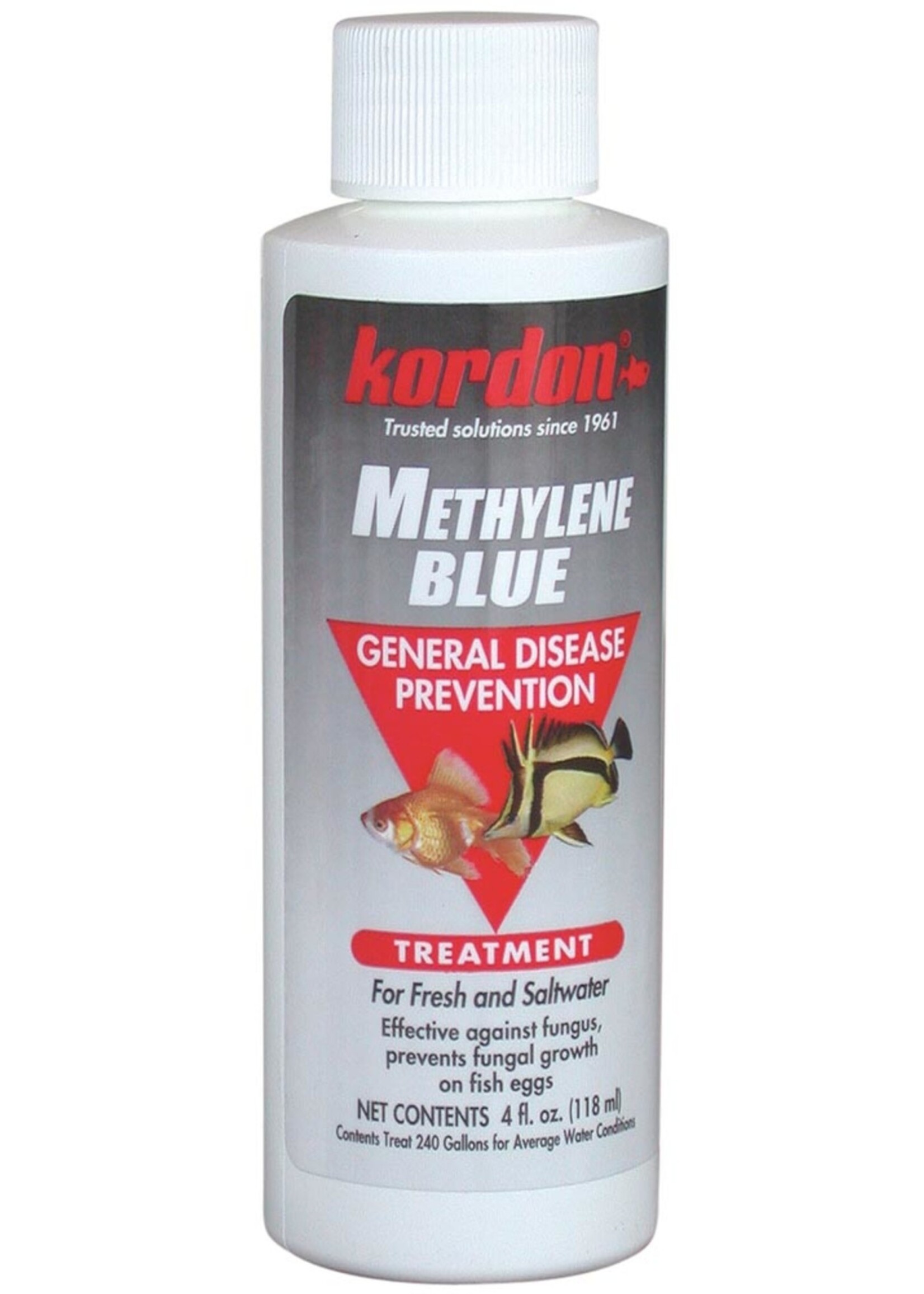SUGGESTED TREATMENT PROCEDURES The following procedures are suggested for freshwater and marine aquariums and ponds. Methylene Blue is removed by activated carbon filtration. It will also be absorbed by porous materials such as rock, coral and wood. The product is best used in bare aquariums or ponds, especially if they are new. Methylene Blue may permanently color the silicone sealant in aquariums. At the conclusion of all treatments, a partial or complete water change should be made and activated carbon replaced in the filter.
Prevention or treatment of fungus on fish eggs:
(a) Remove carbon from the filter and continue to operate with mechanical filter media.
(b) Add 1 teaspoon of 2.303% Methylene Blue per 10 gallons of water. This produces a concentration of 3 ppm. For increased concentrations, add approximately 1/3 teaspoon (1.64 ml) per 10 gallons for each required 1 ppm increase.
(c) Only one application is needed. Treatment should continue for 3 days past free swimming stage or for livebearers 2 days after birth.
Prevention or treatment of fungus or external parasitic protozoans:
(a) Remove carbon filter and continue to operate with mechanical filter media throughout the treatment period.
(b) Add 1 teaspoon of 2.303% Methylene Blue per 10 gallons of water. This produces a concentration of 3 ppm. Continue the treatment for 3 to 5 days.
(c) Make a water change as noted and replace the filter carbon at the conclusion of the treatment.
As an aid in reversal of nitrite (NO2-) or cyanide (CN-) poisoning of marine and freshwater aquarium fishes:
(a) Remove carbon filter and continue to operate with mechanical filter media throughout the treatment period.
(b) Add 1 teaspoon of 2.303% Methylene Blue per 10 gallons of water. This produces a concentration of 3 ppm. Continue the treatment for 3 to 5 days.
(c) Make a water change as noted and replace the filter carbon at the conclusion of the treatment. parasite protozoans."
For use as a dip for treatment of fungus or external parasitic protozoans and cyanide poisoning:
(a) Prepare a nonmetallic container of sufficient size to contain the fish to be treated by adding water similar to the original aquarium.
(b) Add 5 teaspoons (24.65 ml) per 3 gallons of water. This produces a concentration of 50 ppm. It is not recommended that the concentration be increased beyond 50 ppm.
(c) Place fishes to be treated in this solution for no longer than 10 seconds.
(d) Return fish to original aquarium.

